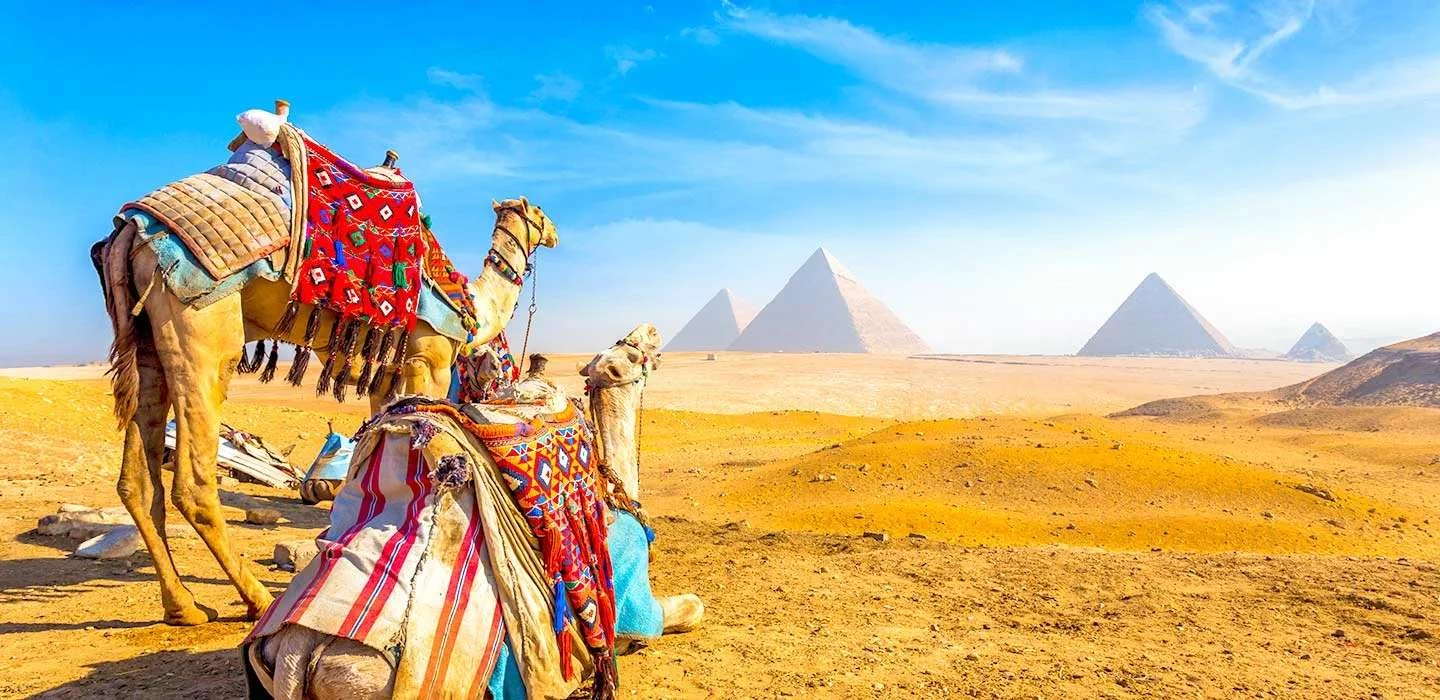
Discover the Timeless Majesty of the Great Pyramids of Giza
The Great Pyramids of Giza stand as one of the most awe-inspiring architectural achievements in human history. Situated on the Giza Plateau, just outside Cairo, these colossal monuments have fascinated travelers, historians, and archaeologists for centuries. Built as royal tombs for the Pharaohs of the Fourth Dynasty, the pyramids reflect the ancient Egyptians' advanced understanding of engineering, mathematics, and celestial alignment. Today, they remain among the most visited and studied structures in the world, drawing millions of tourists eager to witness their grandeur.
The Three Great Pyramids
The Pyramid of Khufu (Great Pyramid)
The Pyramid of Khufu, also known as the Great Pyramid of Giza, is the largest and oldest of the three pyramids. Constructed around 2580 BC, it originally stood at 146.6 meters (481 feet), making it the tallest man-made structure for over 3,800 years. Built from approximately 2.3 million limestone blocks, each weighing between 2.5 to 15 tons, the Great Pyramid was an extraordinary feat of engineering. Its precise alignment with the cardinal points and astronomical significance continue to intrigue scholars. Inside, narrow passageways lead to the King's Chamber, Queen's Chamber, and mysterious air shafts that suggest possible religious functions.
The Pyramid of Khafre
The Pyramid of Khafre, slightly smaller than Khufu's but appearing taller due to its elevated position, was built for Pharaoh Khafre, the son of Khufu. It retains some of its original casing stones at the peak, offering a glimpse into how all pyramids once looked. At its base lies the Great Sphinx, a colossal limestone statue with the body of a lion and the head of a pharaoh, believed to represent Khafre himself.
The Pyramid of Menkaure
The smallest of the three main pyramids, the Pyramid of Menkaure was built for Pharaoh Menkaure. Despite its modest size, it features more refined masonry, with a granite lower section that suggests a different construction technique. Several statues of the pharaoh and deities were discovered here, shedding light on the religious beliefs of the time.
The Great Sphinx of Giza: Guardian of the Plateau
No visit to the Pyramids of Giza is complete without marveling at the Great Sphinx. This enigmatic statue, measuring 73 meters (240 feet) in length and 20 meters (66 feet) in height, is believed to have been carved during Khafre's reign. Theories about its purpose range from it being a protective guardian to a representation of the sun god Ra-Horakhty. Its missing nose and partially eroded features add to the mystery surrounding its true origins and significance.
Theories and Mysteries Surrounding the Pyramids
The Pyramids of Giza have been the subject of countless theories, from their construction techniques to their potential connections with celestial bodies. Some researchers propose that ramps, levers, and counterweights were used to transport massive stone blocks, while others speculate about lost ancient technologies. The mathematical precision of the pyramids, with the Great Pyramid's dimensions encoding the golden ratio and pi, has led to theories about their purpose beyond mere tombs.
Visiting the Pyramids: What You Need to Know
Location and How to Get There
The Pyramids of Giza are located about 13 kilometers (8 miles) southwest of Cairo. Visitors can reach the site by taxi, private tour, or public transport. The nearest metro station is Giza, from which a short taxi ride will take you to the plateau.
Best Time to Visit
To avoid extreme heat and large crowds, the best time to visit is early in the morning or late in the afternoon. The cooler months from October to April provide a more comfortable experience.
Entrance Fees and Tours
- General Admission: Includes access to the Giza Plateau and the area surrounding the pyramids.
- Additional Tickets: Required for entry into the pyramids themselves and the Solar Boat Museum.
- Guided Tours: Highly recommended for gaining deeper insights into the history and significance of the site.
What to Expect
- Camel and Horseback Rides: A popular way to explore the vast desert landscape around the pyramids.
- Sound and Light Show: Held in the evening, this show narrates the history of the pyramids with dramatic lighting effects.
- Photography Opportunities: Stunning panoramic views can be captured from different vantage points, particularly at sunrise and sunset.
The Great Pyramids of Giza continue to captivate the imagination of millions, symbolizing the ingenuity and ambition of ancient Egypt. Whether you are a history enthusiast, an adventurer, or a casual traveler, witnessing these timeless structures firsthand is an unforgettable experience. As ongoing research unravels new discoveries, the pyramids remain a testament to the enduring legacy of one of the world's most fascinating civilizations.
FAQs About the Great Pyramids of Giza
1. Why were the Pyramids of Giza built?
The pyramids were constructed as elaborate tombs for the pharaohs of the Fourth Dynasty, ensuring their safe journey to the afterlife.
2. Can visitors go inside the pyramids?
Yes, visitors can enter the Great Pyramid and the Pyramid of Khafre for an additional fee. However, access is limited to preserve the structures.
3. How were the pyramids built?
The exact construction methods remain debated, but scholars believe ancient Egyptians used ramps, levers, and skilled labor to transport and position the massive limestone blocks.
4. What is the best way to explore the Pyramids of Giza?
Hiring a local guide, taking a camel or horseback ride, and visiting early in the day provide the best experience.
5. Are there other pyramids in Egypt besides Giza?
Yes, Egypt is home to over 100 pyramids, including the Step Pyramid of Djoser in Saqqara and the Bent and Red Pyramids in Dahshur.




